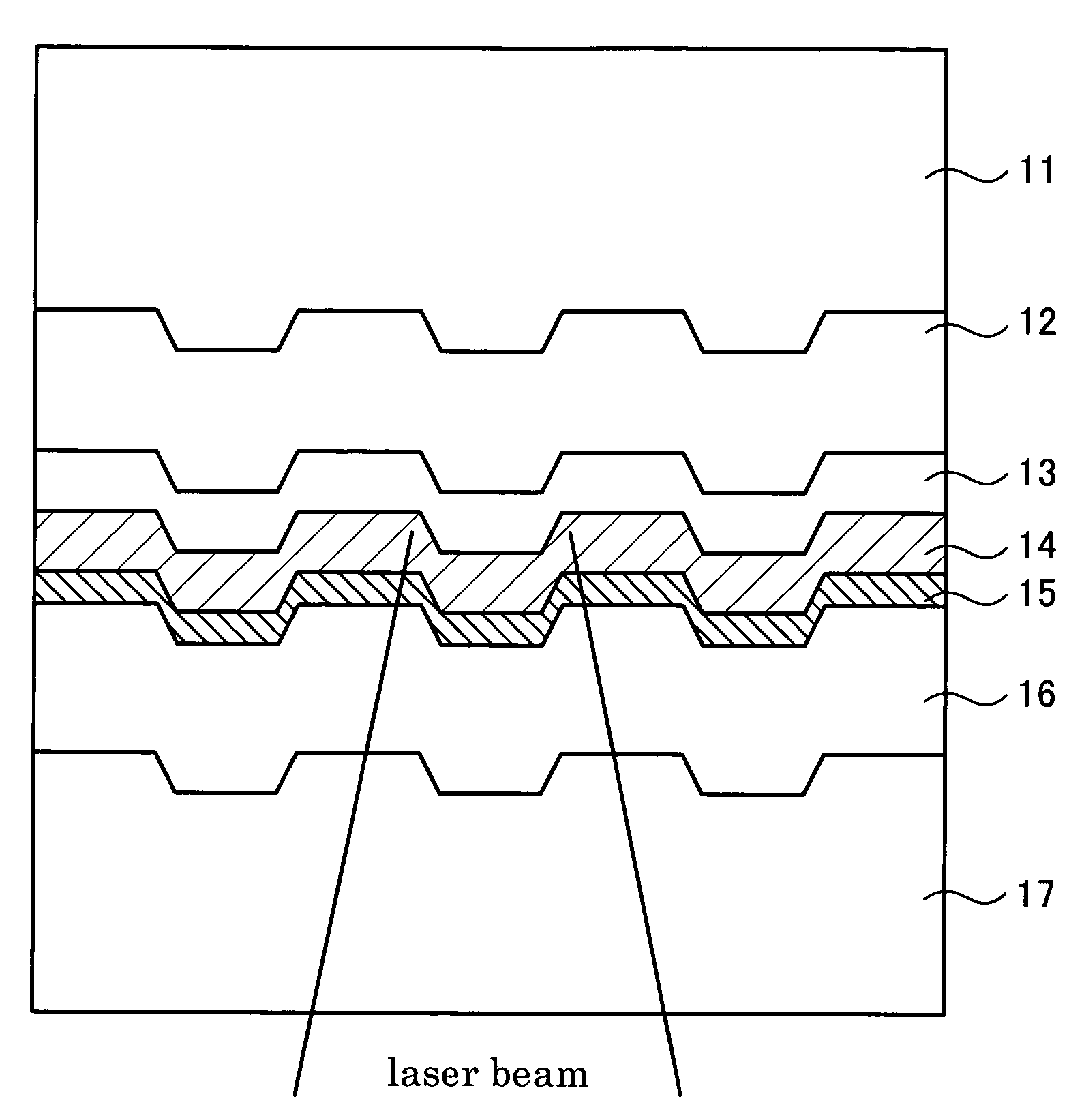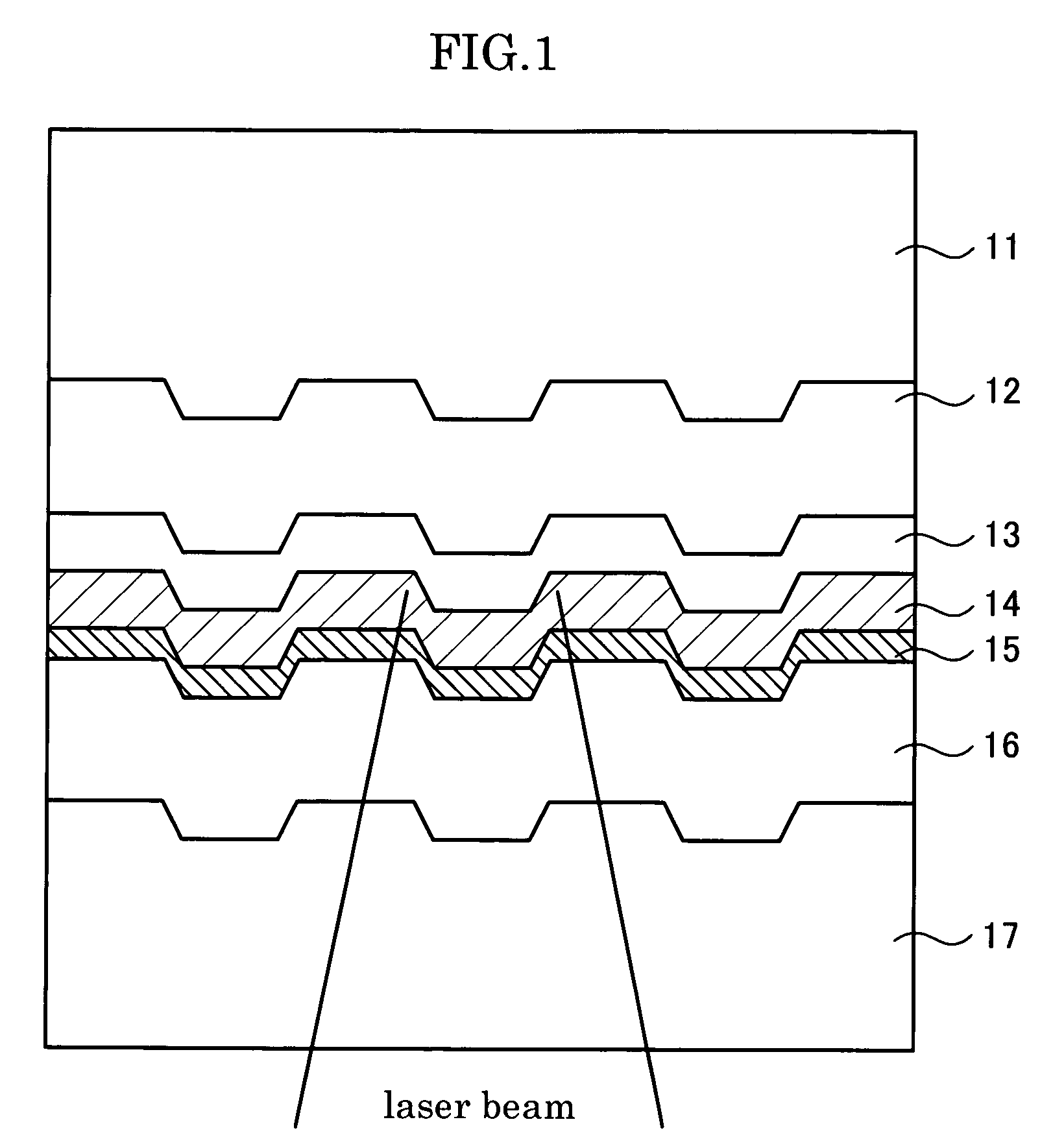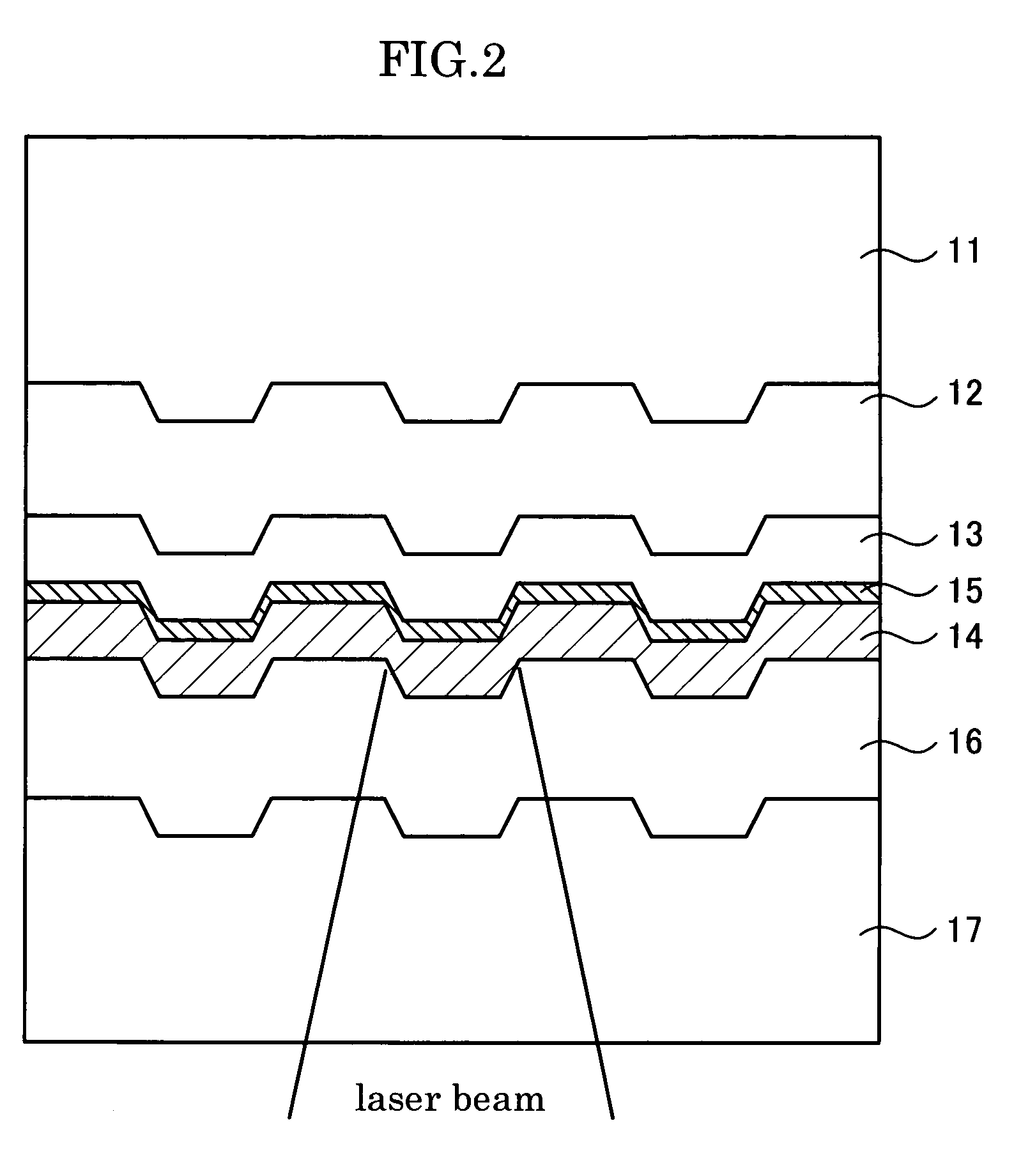Optical information recording medium and method of recording and reproducing information on and from optical information recording medium
a technology of optical information and recording medium, which is applied in the direction of optical recording/reproducing/erasing methods, instruments, photomechanical equipment, etc., can solve the problems of difficult to design an organic dye for recording/reproducing light with a short wavelength, difficult to achieve a high transfer rate, and likely insufficient recording sensitivity. achieve the effect of high transfer ra
- Summary
- Abstract
- Description
- Claims
- Application Information
AI Technical Summary
Benefits of technology
Problems solved by technology
Method used
Image
Examples
first embodiment
[0029]FIG. 1 is a view for explaining the structure of an optical information recording medium in the first embodiment to which the present invention is applied. A single-panel optical disk of a film incident light type shown herein is laminated by in the order of a transparent substrate 11, a reflective layer 12, a first dielectric layer 13, a recording layer 14, a write-protect layer 15 and a second dielectric layer 16. Further, UV curing resin forms a transparent cover layer 17 on the second dielectric layer 16. The recording layer 14 is made of a phase-change material, and the write-protect layer 15 is provided to abut on the side of the recording layer 14, where a laser beam enters from. The laser beam passes through the cover layer 17, the second dielectric layer 16 and the write-protect layer 15 to enter the recording layer 14, thereby recording and reproducing information. Herein, a laser beam with a wavelength of 500 nm or less is used for recording and reproducing informat...
second embodiment
[0048]FIG. 2 is a view for explaining the structure of the optical information recording medium in a second embodiment. In a single-panel optical disk of a film incident light type shown herein, a write-protect layer 15 is provided to abut on a side of a recording layer 14, which is opposite the side which a laser beam enters from. As shown in FIG. 2, sequentially stacked on a substrate 11 are a 50 nm-thick Ag98Ru1Au1 reflective layer 12, a 18 nm-thick (ZnS)80(SiO2)20 (mol %) first dielectric layer 13, a 3 nm-thick Co3O4 (atom %) write-protect layer 15, a 15 nm-thick Ge33Sb13Te54 (atom %) recording layer 14, a 60 nm-thick (ZnS)80(SiO2)20 (mol %) second dielectric layer 16 and a cover layer 17. Each layer is formed in the same way as the first embodiment.
[0049]By providing the write-protect layer 15 on the side of the recording layer 14, opposite to the side which the laser beam enters from, the recording layer 14 of the optical disk of the film incident light type in the present emb...
third embodiment
[0051]FIG. 3 is a view for explaining the structure of the optical information recording medium in a third embodiment. In a single-panel optical disk of a film incident light type shown herein, two write-protect layers are provided on both sides of a recording layer 14. As shown in FIG. 3, sequentially stacked on a substrate 11 are a 50 nm-thick Ag98Ru1Au1 (atom %) reflective layer 12, a 18 nm-thick (ZnS)80(SiO2)20 (mol %) first dielectric layer 13, a 2 nm-thick CO3O4 (atom %) first write-protect layer 15a, a 15 nm-thick Ge33Sb13Te54 (atom %) recording layer 14, a 2 nm-thick Co3O4 (atom %) second write-protect layer 15b, a 60 nm-thick (ZnS)80(SiO2)20 (mol %) second dielectric layer 16 and a cover layer 17.
[0052]By providing the first and second write-protect layers 15a and 15b on both sides of the recording layer 14, the recording layer 14 of the optical disk of the film incident light type in the present embodiment cannot be overwritten even when continuous light irradiation on amo...
PUM
| Property | Measurement | Unit |
|---|---|---|
| temperature | aaaaa | aaaaa |
| temperature | aaaaa | aaaaa |
| thickness | aaaaa | aaaaa |
Abstract
Description
Claims
Application Information
 Login to View More
Login to View More - R&D
- Intellectual Property
- Life Sciences
- Materials
- Tech Scout
- Unparalleled Data Quality
- Higher Quality Content
- 60% Fewer Hallucinations
Browse by: Latest US Patents, China's latest patents, Technical Efficacy Thesaurus, Application Domain, Technology Topic, Popular Technical Reports.
© 2025 PatSnap. All rights reserved.Legal|Privacy policy|Modern Slavery Act Transparency Statement|Sitemap|About US| Contact US: help@patsnap.com



